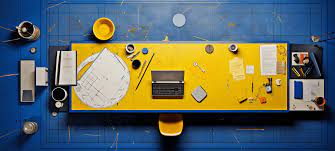
Crafting Engaging Websites: The Art of Web Designing
The Art of Web Designing
Web designing is a crucial aspect of creating an engaging and functional online presence. It involves a combination of creativity, technical skills, and user experience considerations to design websites that not only look visually appealing but also function effectively.
Key Elements of Web Designing
Effective web designing encompasses various key elements, including:
- Visual Design: This involves creating a visually appealing layout, choosing colour schemes, typography, and images that reflect the brand identity and engage users.
- User Experience (UX) Design: UX design focuses on creating a seamless and intuitive user journey on the website, ensuring easy navigation and accessibility.
- Responsive Design: With the increasing use of mobile devices, responsive design ensures that websites adapt to different screen sizes and devices for optimal viewing experience.
- Information Architecture: Organising content in a logical and structured manner helps users find information easily and enhances usability.
- Accessibility: Ensuring that websites are accessible to all users, including those with disabilities, by following web accessibility guidelines.
The Role of Web Designers
Web designers play a crucial role in bringing together these elements to create a cohesive and effective website. They collaborate with clients to understand their requirements, conceptualise design ideas, create mock-ups and prototypes, and work closely with developers to bring the design to life.
The Future of Web Designing
As technology evolves and user expectations continue to rise, web designing is constantly evolving. Trends such as minimalistic design, micro-interactions, dark mode themes, and 3D elements are shaping the future of web designing, offering new possibilities for creativity and innovation.
In conclusion, web designing is not just about creating visually appealing websites but also about delivering exceptional user experiences. By incorporating key elements of design and staying updated with industry trends, web designers can create impactful digital experiences that resonate with users.
Top 5 Essential Tips for Effective Web Design
- Ensure your website is mobile responsive for optimal viewing on different devices.
- Use a clean and simple design to enhance user experience and readability.
- Optimize images and videos to improve loading speed and overall performance.
- Include clear navigation menus to help users easily find the information they are looking for.
- Consistency in design elements such as colours, fonts, and spacing creates a cohesive look.
Ensure your website is mobile responsive for optimal viewing on different devices.
It is essential to ensure that your website is mobile responsive to provide an optimal viewing experience across various devices. With the increasing use of smartphones and tablets, users access websites from different screen sizes and resolutions. A mobile-responsive design allows your website to adapt seamlessly to these varying devices, ensuring that content remains accessible, visually appealing, and easy to navigate regardless of the device used. By prioritising mobile responsiveness in web design, you can enhance user engagement and satisfaction, ultimately leading to a more positive user experience.
Use a clean and simple design to enhance user experience and readability.
When it comes to web designing, using a clean and simple design can significantly enhance user experience and readability. A clutter-free layout with minimalistic elements not only makes the website visually appealing but also improves navigation and usability for visitors. By focusing on simplicity, designers can create a more intuitive interface that allows users to easily find the information they need without distractions. Clear typography, ample white space, and a consistent colour scheme contribute to better readability, ensuring that users can engage with the content effortlessly. In essence, simplicity in design is key to creating a user-friendly website that prioritises functionality and enhances the overall browsing experience.
Optimize images and videos to improve loading speed and overall performance.
Optimizing images and videos is a crucial tip in web designing to enhance loading speed and overall performance of a website. By reducing the file size of images and videos without compromising quality, web designers can significantly improve page load times, leading to a better user experience. This optimization not only benefits users by providing faster access to content but also contributes to improved search engine rankings, as site speed is a key factor in search algorithms. Implementing this tip ensures that websites load quickly and efficiently, making them more engaging and user-friendly for visitors.
Include clear navigation menus to help users easily find the information they are looking for.
Including clear navigation menus is a fundamental tip in web designing as it plays a crucial role in enhancing user experience. By providing easily accessible and well-organised navigation menus, users can quickly find the information they are seeking on a website. Clear navigation not only improves usability but also helps users navigate through different sections of the site seamlessly, leading to higher engagement and satisfaction. A well-designed navigation system ensures that visitors can effortlessly explore the content and functionalities of a website, ultimately contributing to a positive user experience.
Consistency in design elements such as colours, fonts, and spacing creates a cohesive look.
Consistency in design elements, such as colours, fonts, and spacing, plays a crucial role in creating a cohesive and visually appealing website. By maintaining consistency across these elements, web designers can establish a unified visual identity that enhances brand recognition and user experience. Consistent use of colours and fonts helps in reinforcing the brand’s personality and message, while uniform spacing ensures a balanced layout that is easy to navigate. Overall, adhering to consistent design elements not only improves the aesthetics of a website but also contributes to a seamless and harmonious user journey.